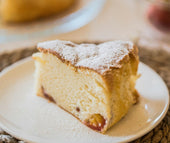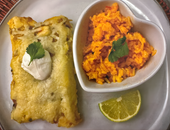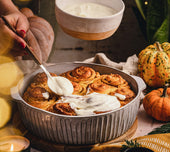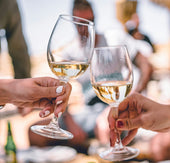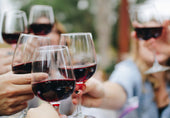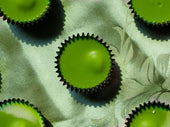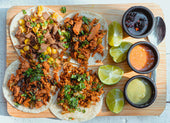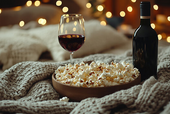
What is Sauternes?

Some of the world's greatest wines are sweet. No, we are not referencing wines that have been altered with levels of sugar or halted fermentation to achieve sweetness. We are talking about Sauternes, a golden colored, sweet French wine from the Bordeaux region. Drive about 25 miles southeast towards the Graves appellation, there are two neighboring sub-regions, Barsac and Sautneres. These two regions are along side the Garonne and the Ciron tributary. The two rivers provide an unique microclimate along with the morning fogs and warm afternoons. The water of the Ciron is cooler than the Garonne, thus in the warm afternoons of early Fall, the different temperatures from the two rivers meet to produce a mist that descends upon the vineyards. This special climate conditions allows the Boytriytis cinerea (a fungus) to develop. Sauternes is made only from Semillon, Sauvignon and Muscadelle grapes that have been affected by Botrytis cinera (also known as noble rot). The unique climate, terror and winemaking style makes Sauternes an unique wine to examine and try.
It was discovered in the mid 1800s that some of the chateau owners who accidentally let their grapes hang on the vines developed noble rot. The fungus attacks the grape skin, dehydrating the berries one by one. The result is a berry that is highly concentrated with leftover sugars. All of the grapes are harvested by hand and sometimes berry by berry. The result from pressing whatever juice is left in the berry, is a golden colored, sweet nectar.
Harvest takes place exclusively by hand sorting each individual cluster and vines (typically between three to five passages) to identify berries that have reached the optimal ripeness. Yields are extremely low, around 8 to 25 hl/ha.
Each individual grape variety is separately harvested and vinified and then blended at a later time. All of the pressing is operated slowly, gently and with care. This helps to preserve the flavors and prevent unwanted profiles in the wine. Fermentation typically starts with the natural yeasts, in barrels. The aging process can take up to two years or even three years. This helps the wine to achieve its full character.
What does it taste like?
Tasting Sauternes is similar to drinking pure nectar of the fruit. The layers of flavors are typically of honeyed apricot, white peach, quince, dried citrus fruit, mango, ginger, coconut, tropical fruit, fig, brioche, creme brulee, honey suckle and toasted spices. The finish is extremely long and complex with a balanced acidity to marry the sweetness.
A well made sweet wine can age. Some of the worlds oldest wines are Sauternes. However you can enjoy Sauternes young in a 375ml bottle and discover its vibrancy and freshness. A wine so labor intensive, complex and long aging makes this truly an under-rated wine at this price point.
Not only can you pair Sauternes with dessert, enjoy it on its own (chilled). Try cheesecake, fruit tart and custard. Also try with some roasted poultry or spicy Asian cuisine. Due to the layers and layers of flavor, you can even pair with dishes that have high levels of cream sauce, salty park, briny seafood (oysters) and fried foods. The world of food pairing with Sauternes is endless, go ahead and open a bottle yourself and see.
Other Wines
Some of the Sauternes producers are also making a dry white wine with the same grapes. Check out some of these stellar dry styles: Clos des Lunes Lune d'Argent



